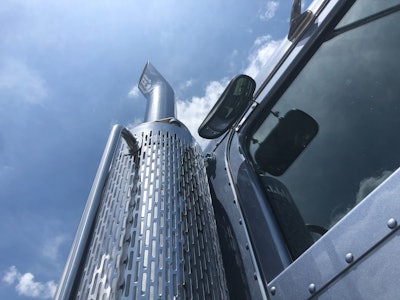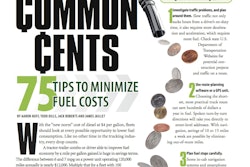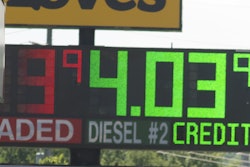
When it comes to cleaning up the environment, freight trucks are often labeled as being in the “hard to abate” sector. I come across this term frequently and it makes me cringe. Curing cancer is hard. Getting Republicans and Democrats to agree on anything is hard. Eliminating racism in America is hard. Getting freight trucks to emit fewer pollutants is not even in the economy overflow parking lot area of the “hard” ball park.
Google the term “hard to abate” and you will find millions of entries. The term deals with reducing emissions and becoming more environmentally efficient. Heavy-duty trucking is frequently put in this category. At one point in time, this was probably a good assessment.
Today’s new truck technologies emit significantly less harmful elements than older trucks. The challenge is about retiring older vehicles and reducing the average age of vehicles. This is a matter of buying a new truck and scrapping an old one. Excuse me if that does not make my list of things that are hard to do.
NACFE’s 2017 Run on Less demonstration showed that modern trucks driven by great drivers could exceed 10 MPG in real-world conditions and with long-haul commercial loads. NACFE’s 2019 Run on Less Regional demonstration showed that modern diesel tractors on regional routes could average 8.7 MPG in real-world operations with real-world regional haul loads.
On LinkedIn I follow reports from great drivers such as Henry Albert, Clark Reed, Joel Morrow and others who regularly post their daily route LinkeDrive reports, and all are regularly able to exceed 10 MPG in real-world conditions with their commercial loads. NACFE’s Annual Fleet Fuel Study tracks the various trends on industry averages and shows the average MPG has been improving for freight tractors over the period 2011 to 2019 at a pace of 2% per year.
In 2009, I helped draft the Peterbilt/Cummins proposal for the first Department of Energy SuperTruck to publicly exceed in 2013 10 MPG. By 2016, four OEMs had successfully exceeded that supposedly challenging target. By 2017, a good deal of the SuperTruck “magic” had started being incorporated into OEM production models. In 2009, the thought was that about 6 MPG was the state-of-the-art in the industry as measured against the baseline best aerodynamic models at that time pulling the standard 53-foot non-aerodynamic trailers.
I frequently highlight that improving fuel economy means reducing emissions and reducing operating costs, all at the same time. A win-win-win situation. It really doesn’t matter which hat you wear.
I had the fortune in 2020 of working with the Australian Alliance for Energy Production (A2EP) and Mov3ment on efforts to move the Australian industry toward lower emissions. They highlighted that the average age of heavy haul tractors in Australia is over 16 years. It’s a testament to what is an impressive accomplishment for the Australian vehicle maintenance sector. By comparison, the American Transportation Research Institute, National Automobile Dealers Association and FTR variously estimate the average age of useful commercial Class 8 tractors in the U.S. to be between five and eight years. Those are averages, trucks have long lives. When I worked at a major truck OEM, it was not unusual to get requests for information on servicing tractors 20 years old and much older.
Trucks wear out as they age, with maintenance costs going up with mileage. NACFE has cited industry reports showing that fleets tend to move trucks into lower mileage roles as they age, trying to keep maintenance costs in check by reducing wear. So vehicles move from long haul, to regional haul, to short haul and drayage, and ultimately to farm use, for example.
Trucks are capital investments, but they are rarely one-owner vehicles. They are handed down or traded in from fleet to fleet over their lives until eventually being scrapped. Accelerating retirement of these older vehicles is then a matter of buying and scrapping them mid-life. California has realized this in various incentive programs by encouraging the buying of new zero-emission trucks, requiring scrapping a much older vehicle to qualify for receiving funds to help purchase a new one. In 2009, the Federal CARS program — known more commonly as “cash for clunkers” — did something similar for automobiles, helping reduce the price of a new vehicle by trading in and scrapping a much older less efficient one.
Technologists push better emissions reduction strategies. The latest efficiency diesels, along with the looming mass introduction of zero-emission tractors, battery electric, fuel cell electric and other hybrid electric vehicles, are solutions that (on paper) can abate the sector. However, market forces alone are slow to transition and cannot accelerate retirement of older vehicles. Something has to intercede in the natural market transition process and shorten the useful life of these older vehicles in ways that are economically viable for fleets.
The fundamental economics of scrapping a capital tool before its life is over could make businesses and economists wince, but it’s just an accounting challenge. There is a need to properly account for the true costs of operating older, higher emitting trucks. NACFE reported on new accounting efforts by the Sustainability Accounting Standards Board (SASB), and by the Taskforce on Climate-related Financial Disclosures, TCFD, in our recent report, Making Sense of Heavy-Duty Hydrogen Fuel Cell Tractors.
Hard to abate? How “hard” is it to buy a new truck? That’s the root of the question facing abatement, and it’s not so much technology as it is accounting.
Rick Mihelic is NACFE’s Director of Emerging Technologies. He has authored for NACFE four Guidance Reports on electric and alternative fuel medium- and heavy-duty trucks and several Confidence Reports on Determining Efficiency, Tractor and Trailer Aerodynamics, Two Truck Platooning, and authored special studies on Regional Haul, Defining Production and Intentional Pairing of tractor trailers.













